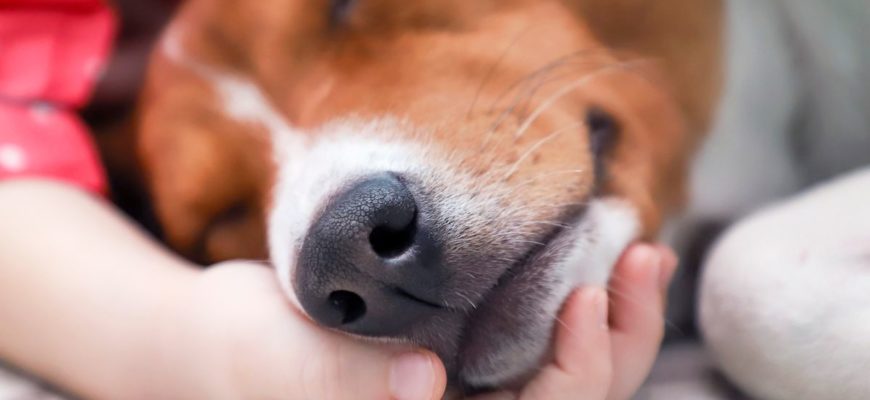Even if the food bowl is always lovingly served with the best food, it can happen that the dog does not eat. Does the alarm bell always have to be rung immediately and the dog taken to a veterinary practice? In this article, you will find out possible causes.
Dog does not eat: These are the reasons

If a dog does not eat, harmless causes can also be behind it. If the type of food has been changed, he may not like the new dog food. He may be waiting for tastier food to be offered.
In nature, wolves are used to not being able to eat their fill every day. Maybe the dog just takes a short break and refuses the normal food. Maybe he only ate treats before and his stomach is full.
Even at high temperatures, it can happen that the dog leaves the filled bowl. In this case, he should be fed early in the morning or in the evening when it is cooler.
What to do if the dog stops eating?
Missing just one meal is nothing to worry about. If the dog’s behavior is unchanged, a different type of food is tried. If the dog has a fever, it must be taken to a veterinarian.
Dried animal food
Not all dogs prefer dry food. Older dogs in particular, which already have a limited sense of smell, often can no longer do anything with the food. Since the odorous substances are not dissolved in water, the feed no longer smells. It is then more difficult for a demented dog to find the bowl.
Your four-legged friend may have dental problems. Even if the chunks are gobbled down more often than chewed, they bump against the teeth and cause pain.
Prolonged loss of appetite is always a warning sign
If the dog is not only fussy but also suffers from a prolonged loss of appetite, it should be examined by a veterinarian. The same applies if other symptoms such as vomiting, nausea, or fever occur. A feed refusal is also possible for medical reasons.
What to feed if the dog doesn’t eat?

Wet food or soup is an alternative to normal dog food. Special diet food is also suitable for feeding.
Stress
Long-lasting stress after a move or other changes in the dog’s environment means that the four-legged friend does not feel comfortable. Stress hits him in the same way as stress affects a person. Once the dog has gotten used to the change in daily routine, it will show its former appetite again.
The dog does not eat with painful diseases
Pain means stress for the dog. He tries to avoid these as much as possible. Purulent, broken, or diseased teeth are particularly painful. Gingivitis, where the gums bleed with every touch, is very uncomfortable when eating. The dog regards the food as the cause of the pain and stops eating. Diseases of the liver and kidneys cause nausea due to a build-up of toxins in the body. The dog keeps vomiting and has no appetite.
Change of teeth
During the change of teeth in the fifth to the ninth month, the gums are often irritated and inflamed. Touch is painful. The dog no longer eats. Only treats are accepted and swallowed carefully.
Loss of appetite with a lot of drinking is always an alarm signal
If the dog drinks more water and refuses food at the same time, kidney disease could be the cause. The kidneys are no longer able to excrete metabolic products. These accumulate in the blood and cause nausea. The dog stops eating and vomits. To dilute the pollutants in the blood, he drinks large amounts of water. Especially in old age, kidney disease must always be considered.
How long can a dog not eat?
A healthy dog can survive 25 days without food. If the dog does not eat for two or three days, it should always be examined by a veterinarian.
Diseases of the nervous system

If the dog suffers from meningitis or paralysis, it may no longer be able to reach its bowl and eat on its own. He needs help. If swallowing is not possible due to enlargement or paralysis of the esophagus, the dog will not eat. Severe tremors from neurological disorders can also affect feed intake.
Dog won’t eat because of upset stomach
Gastric torsion is always an absolute emergency. The dog’s stomach rotates on its own axis. This also constricts the esophagus. The dog can no longer swallow the food and no longer eats.
Tonsillitis
When the tonsils and throat are inflamed, the tonsils are red and severely swollen. The four-legged friend keeps gagging. Since swallowing the dog food is painful, the dog stops eating.
Parasites
If the dog suffers from a heavy infestation with intestinal parasites, the intestinal mucosa is damaged by the worms. Nausea and diarrhea occur. The dog no longer eats.
Which food is suitable for a fussy dog?
Wet food is better than dry food because it smells stronger and tastes better.
Older dogs often have trouble eating
Not only the worn teeth can cause problems for old dogs. Bone tips have often formed on the cervical vertebrae, which cause pain when the head is bent. The dog has trouble reaching the bowl of dog food that is on the floor.
Heart disease and lung problems
If a dog has difficulty breathing, it also has problems eating. He stretches his neck and breathes with his mouth open. Every bite of dog food causes choking attacks. The dog no longer eats.
Mental problems
Dogs suffer from mental health problems too. These can be caused by hormones, such as loss of appetite and refusal to eat during pseudopregnancy. But depression, a bore-out syndrome (the dog is bored with the daily routine), or separation anxiety can also be responsible for the refusal to eat. The dog is apathetic and sleeps a lot. The bowl remains untouched.
What motivates the dog to eat?
Exercise and regular feeding times support normal eating behavior. Treats should only be fed in small amounts.
Solutions: What to do if the dog won’t eat?
If the dog misses just one meal, it’s not a cause for concern. At the next feeding, he will be hungry and will eat again.
If the dog has upset its stomach with spoiled food, nausea must first subside. In this case, the dog can be fed Moro’s carrot soup, which covers the mucous membrane of the stomach and intestines and has a calming effect.
Regular dental check-ups by a veterinarian prevent serious diseases of the periodontium and inflammation of the gums.
If the dog does not like the dry food, it can be fed wet food. BARF is also an option.
Senior dogs eat more easily when the bowl is raised. A feed bar that can be individually adjusted to the size of the dog is well suited.
Dog not eating – When does the dog have to go to the vet?

If the loss of appetite persists for a long period of time, the dog must be examined by a veterinarian in any case. Especially if the dog is shaking and his behavior is changing, it could be an emergency such as torsion or intestinal obstruction.
Fever, vomiting, diarrhea, bleeding or other health problems are always signs that the dog should be examined and treated immediately by a veterinarian.



























